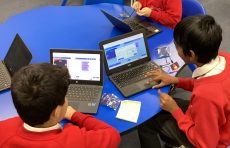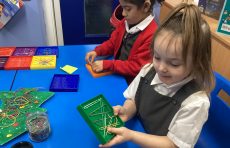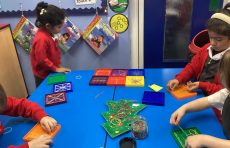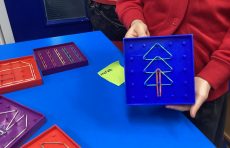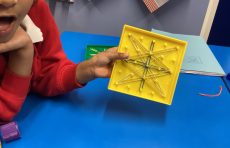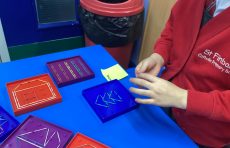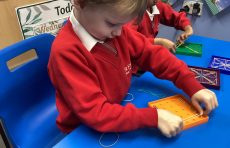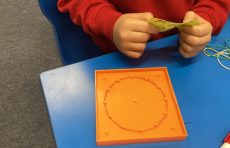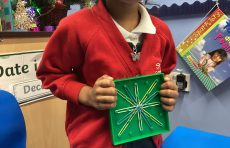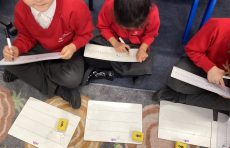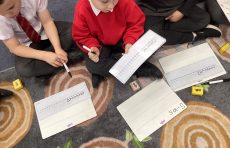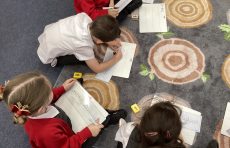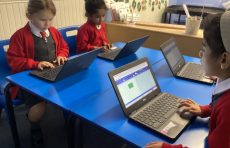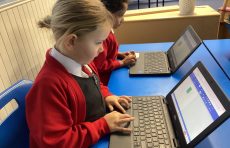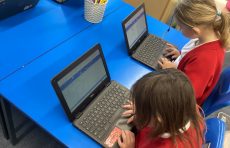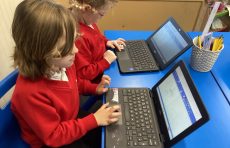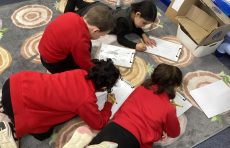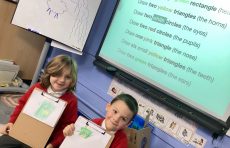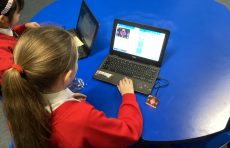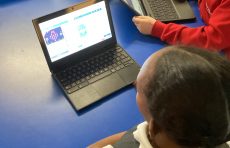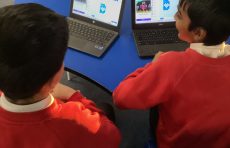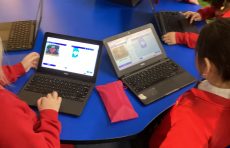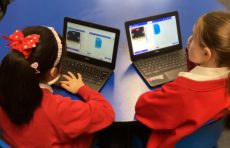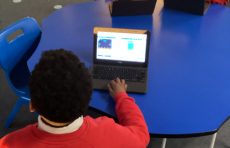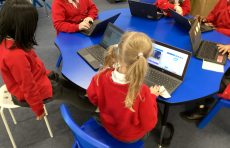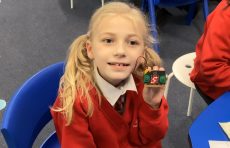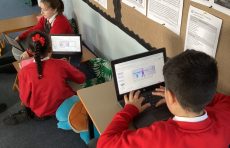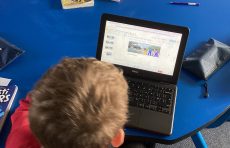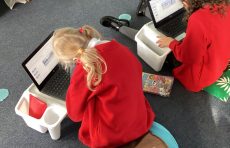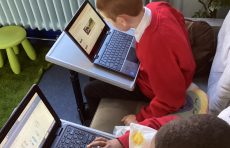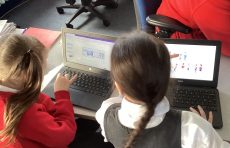Purpose of Study
Computing at our school gives children the knowledge and skills they need to thrive in an increasingly digital world. We follow the Knowsley CLC Computing scheme, which provides a clear, engaging and progressive curriculum that covers computer science, information technology and digital literacy.
The National Curriculum for Computing states that a high-quality computing education equips children to use computational thinking and creativity to understand and change the world. Through Knowsley CLC, children learn how digital systems work, how to program, and how to apply technology safely and effectively in a wide range of contexts. They also develop the confidence to be not just consumers of technology, but creators and problem-solvers too.
Through the delivery of Computing, we aim to improve children’ skills in these four areas:
- Digital literacy
- Information technology
- Computing science
- Online safety
Aims
Our computing curriculum, supported by the Knowsley CLC scheme, aims to ensure that all children:
- Understand the principles of computer science, including algorithms, logic and data representation.
- Develop practical programming skills, creating and debugging their own programs.
- Use a wide range of technology purposefully to create, organise, store, analyse and present content.
- Become digitally literate and able to use technology safely, respectfully and responsibly.
- Understand how technology connects people, places and ideas, and the opportunities and challenges it brings.
- Gain confidence, independence and creativity in using digital tools, preparing them for future learning and the wider world.
How Computing is organised in our school
Early Years Foundation Stage (EYFS)
By the end of EYFS children should be able to:
- seek to acquire basic skills in turning on and operating some ICT equipment
- operate mechanical toys, e.g. turns the knob on a wind-up toy or pulls back on a friction car
- know how to operate simple equipment, e.g. turns on CD player and uses remote control
- show an interest in technological toys with knobs or pulleys, or real objects such as cameras or mobile phones
- shows skill in making toys work by pressing parts or lifting flaps to achieve effects such as sound, movements or new images
- knows that information can be retrieved from computers 40-60 months Completes a simple program on a computer
- use ICT hardware to interact with age appropriate computer software.
Key Stage 1 & 2
At St Finbar’s Catholic Primary School, computing is taught using a blocked curriculum approach. This ensures that children are able to develop depth in their knowledge and skills over the duration of each of their computing topics.
Teachers use the ‘Knowsley CLC computing’ schemes to inform the planning of their computing lessons. The school has a computing suite and children also have access to a class sets of iPad, ensuring that children can use computers for a range of purposes and that it used across the wider curriculum, as well as in discreet computing lessons. At the core of computing is computer science, in which children are taught the principles of information and computation, how digital systems work and how to put this knowledge to use through programming.
In Key Stage 1 the children will learn to understand what algorithms are; how they are implemented as programs on digital devices; and that programs execute by following precise and unambiguous instructions. They will be taught to create and debug simple programs and use logical reasoning to predict the behaviour of simple programs. They will be shown how to use a range of technology purposefully to create, organise, store, manipulate and retrieve digital content as well as recognise common uses of information technology beyond school. They will be taught to use technology safely and respectfully, keeping personal information private; identify where to go for help and support when they have concerns about content or contact on the internet or other online technologies. Each of these skills will be taught through exciting half termly units.
In Key Stage 2 the children will design, write and debug programs that accomplish specific goals, including controlling or simulating physical systems; solve problems by decomposing them into smaller parts. They will use sequence, selection, and repetition in programs, use logical reasoning to explain how some simple algorithms work and correct errors in algorithms and programs. Children will be taught to understand computer networks, including the internet, and the opportunities they offer for communication and collaboration. They will use search technologies effectively, learn to appreciate how results are selected and ranked, and be discerning in evaluating digital content. Children will be taught to select, use and combine a variety of software (including internet services) on a range of digital devices to create a range of programs, systems and content that accomplish given goals. They will use technology safely, respectfully and responsibly; recognise acceptable/unacceptable behaviour; identify a range of ways to report concerns about content and contact.
What we hope is achieved
After the implementation of this computing curriculum, children at St Finbar’s Catholic Primary School will be digitally literate and able to join the rest of the world on its digital platform. They will be equipped, not only with the skills and knowledge to use technology effectively and for their own benefit, but more importantly – safely. The biggest impact we want on our children is that they understand the consequences of using the internet and that they are also aware of how to keep themselves safe online.
As children become more confident in their abilities in computing, they will become more independent and key life skills such as problem-solving, logical thinking and self-evaluation become second nature.
Documents
Computing – National Curriculum
Computer Yearly Overview
Computing – Vocabulary Progression
Computing – Curriculum Statement
Skills Progression – Year Groups
